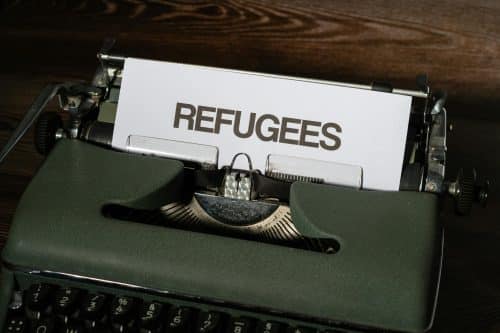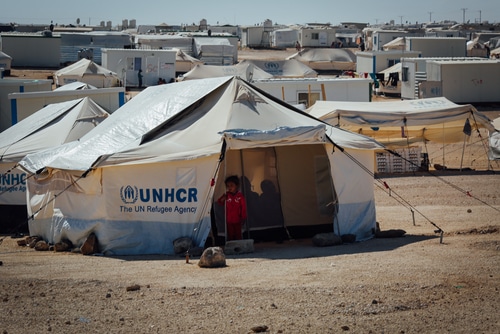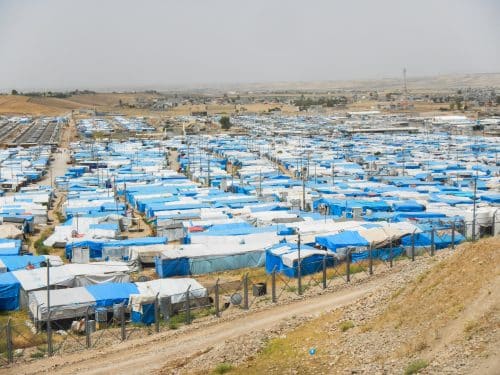The Royd Illegal Migrants and Refugees Initiative
Published 27th July 2024
A Ground-breaking Solution to the Illegal Migrants and Refugee Crisis
Are you curious about a viable solution to shelter the huge numbers of migrants and asylum seekers arriving illegally in the UK?
In this article, I unveil a comprehensive plan that could change everything.
Last August, Suella Braverman attempted to address this issue by housing asylum seekers in tents—a plan that flopped due to the Home Office purchasing clearly unsuitable marquees. They also suggested using military bases, which sparked criticism for potentially re-traumatising individuals fleeing war.
The Royd Illegal Migrants and Refugees Initiative offers a fresh approach. My main strategy focuses on providing humane shelter for migrants and asylum seekers arriving by boat, adhering to the standards and policies of the United Nations High Commissioner for Refugees (UNHCR).
While the UNHCR’s ideal is permanent housing within a community, the harsh reality is that the UK is currently struggling to house its own homeless and vulnerable populations.
According to the National Housing Federation, there are 4.2 million people in need of social housing in England, including homeless individuals and those living in overcrowded, unaffordable, and unsuitable conditions.
Given these challenges, we must prioritise UK residents while still providing the best possible solutions for refugees.
The Royd Illegal Migrants and Refugees Initiative’s proposal to use UNHCR-approved shelters stands out as the most feasible and humane option to date, or “Is It Me!”
Numbers of People Sheltered by UNHCR
Total Population: As of 2023, UNHCR is responsible for over 35 million displaced persons, including refugees, asylum seekers, and internally displaced people. This is out of a population that UNHCR protects and/or assists of 122.6 million.
Children: Nearly half of the refugee population are children, making it around 17.5 million children under UNHCR’s care.
UNHCR’s shelters are designed to be adaptable and resilient to various environmental conditions, ensuring the safety and well-being of displaced people across different climates and regions, so easily used to shelter asylum seekers arriving in the UK.
The Royd Illegal Migrants and Refugees Initiative
UNHCR Model

A Bold Plan for Immediate Implementation
Ready for a game-changing solution to the refugee crisis? The Royd Illegal Migrants and Refugees Initiative is here to provide immediate, practical solutions. Using the UNHCR model, we propose starting with Emergency Tents for quick response, while simultaneously erecting Cold Rainy Climate shelters in organised refugee camps.
These camps will be more than just shelters—they’ll offer essential services like water, sanitation, healthcare, education for children, initial processing facilities, and communication facilities. Plus, they’ll include recreation and calm areas to help those who are traumatised.
But let’s be clear: these camps will be enclosed to prevent absconding and to protect the environment, local population, and amenities. Don’t mistake them for prisons, as camp residents can withdraw their applications at any time and leave for another destination outside the UK at their own expense.
It’s crucial to keep illegal migrants and refugees from mingling with the community, especially after reports of the Home Office losing track of large numbers, including 200 children, with most being of Albanian origin. Shockingly, a January 2024 letter to the Home Affairs Committee revealed that 5,598 (32%) of failed claimants remain in the UK, with the Home Office scrambling to re-establish contact.
Refugee Camps on Our Coastal Islands: A Unique Deterrent
The second bold step of the Royd Illegal Migrants and Refugees Initiative, is to deter illegal entries by setting up refugee camps on the numerous islands around Britain’s coast.
Those islands, once sparsely populated or previously inhabited, offer ideal locations for various camps tailored to diverse needs; from the frail or vulnerable, families with young children, to healthy young men.
By leveraging these isolated locations, we can provide humane processing while maintaining community safety and environmental protection.
Island Biodiversity Conservation and Refugee Rehabilitation Initiative
Selected islands, ideally would not be those with large conurbations that may embolden attempts by failed asylum seekers to disappear into the community.
However, many of the others, if not all of the islands, may have some form of conservation area, or are part of managed conservation efforts. These should have their biodiversity comprehensively documented, and suitable campsites identified.
The government must also provide a bond to ensure that funds are always available for the rehabilitation of the island once the refugee camps are closed.
The bond should also include additional funding for the Community Development Programs Initiative, to create pathways for camp employees to transition into the employment opportunities identified by the Environmental Conservation and Restoration Initiative.
Infrastructure that may continue to be a useful asset to the island after the camps have been vacated should be constructed with durability in mind.
Commitment to Conservation of Native UK Biodiversity
The conservation areas may not necessarily be an obstruction to the creation of refugee camps, as the critical areas that are identified could be preserved, allowing other areas to be used for refugee campsites. However, we need a government with a sincere commitment to conserving native UK biodiversity.
Inspired by the success of the Eden Project, the Royd Initiative proposes the establishment of similar mini-projects, or “Biodiversity Arks,” dedicated to the conservation of the UK’s unique biodiversity. These arks aim to preserve and restore populations of endangered animals, plants, and other organisms, ensuring their survival for future generations.
These Biodiversity Arks would be strategically located in areas not under threat from our expanding population, creating safe havens for endangered species. These arks will become increasingly essential, as more green belt land is developed to meet the accelerated demand for housing. They will act as critical refuges, protecting and nurturing the UK’s precious biodiversity amidst growing urbanisation.
Can Biodiversity Arcs be afforded? “Yes”. Now that the National Audit Office report from March 1, 2024, the UK Government was set to pay £370 million under the UK-Rwanda Partnership, plus an extra £20,000 per individual, and £120 million once 300 people had been relocated.
Incentives and Compensation for Island Residents Hostinga Refugee Camp
In addition to Biodiversity and conservation projects that benefit both the local environment and ensuring that natural habitats are preserved and enhanced, a comprehensive package of incentives and compensation should be offered by the government and relevant authorities.
This can help ensure that local residents feel valued and supported, fostering a positive and cooperative relationship between the host community and the refugee population.
UNHCR Shelters

Types of Shelter Provided
Emergency Tents: Used in the initial phase of a crisis. These tents are easy to transport and set up, providing immediate shelter.
Transitional Shelters: Semi-permanent structures such as prefabricated houses, or upgraded tents with better insulation and durability.
Suitability to Climate
Cold Climates: Shelters are equipped with thermal insulation, stoves, and appropriate bedding.
Rainy/Monsoon Climates: Waterproof materials and raised platforms to prevent flooding.
Shelters suitable to UK’s climate
To protect migrants and asylum seekers from the worst of the UK’s weather, a combination of Cold Climate Shelters that are also suitable for use as a Rainy Climate Shelter will be used.
Incentives
and Compensation
Types of Incentives and Compensation for Island Residents Hosting a Refugee Camp
The following types of incentives and compensations could include the following.
Financial Compensation
Direct Payments: Provide residents with direct financial compensation for any inconvenience or disruption caused by the refugee camp.
Property Value Guarantees: Ensure that property values are maintained or compensated if they decrease due to the presence of the camp.
Infrastructure Improvements
Upgraded Facilities: Invest in local infrastructure, such as roads, healthcare facilities, and schools, that benefit both the local population and the refugee camp.
Enhanced Utilities: Improve water, electricity, and sanitation systems to accommodate the increased population and improve quality of life for residents.
Economic Incentives
Job Creation: Prioritise hiring local residents for jobs created by the refugee camp, including construction, administration, and service roles.
Business Support: Offer grants or low-interest loans to local businesses to expand or adapt their services to meet the needs of the camp.
Community Development Programs
Environmental Conservation and Restoration
Sustainable Practices: Support the development of sustainable agriculture, fishing, and other local industries, ensuring long-term environmental and economic health. Conservation Projects for the protection of the UK’s unique biodiversity.
Healthcare and Social Services
Enhanced Healthcare: Improve local healthcare facilities and services to meet the increased demand, benefiting both residents and refugees.
Mental Health Support: Provide mental health services and support for both residents and refugees to address any stress or trauma associated with the camp’s presence.
Legal and Security Assurances
Legal Guarantees: Ensure that residents’ property rights and other legal protections are upheld and respected.
Security Enhancements: Increase local security measures to ensure the safety and well-being of both residents and refugees, addressing any concerns about crime or disorder.

Conclusion
The Royd Illegal Migrants and Refugees Initiative offers a fresh approach by focusing on providing humane shelter for illegal migrants and asylum seekers, all while sticking to the gold standards set by the United Nations High Commissioner for Refugees (UNHCR).
Say goodbye to endless legal battles and hello to a compassionate, practical plan.
One of the standout features! Setting up secure refugee camps on islands around Britain’s coast.
A Deterrent with Compassion
This initiative is the main deterrent, as it prevents illegal migrants from disappearing into the wider UK population and shields vulnerable migrants and asylum seekers from the criminal gangs that prey on them. Plus, the Biodiversity Arks initiative brings long-term benefits for conserving the UK’s unique biodiversity, whilst freeing land for the much-needed social housing.
Providing secure humane shelter for illegal migrants and asylum seekers on islands, also reduces the huge cost of the current housing solutions, as they can be transferred to the appropriate camp, freeing much needed accommodation and funds for the UK’s homeless people. It also provides for a government bond to ensure that funds are always available for the rehabilitation of the island once the refugee camps are closed